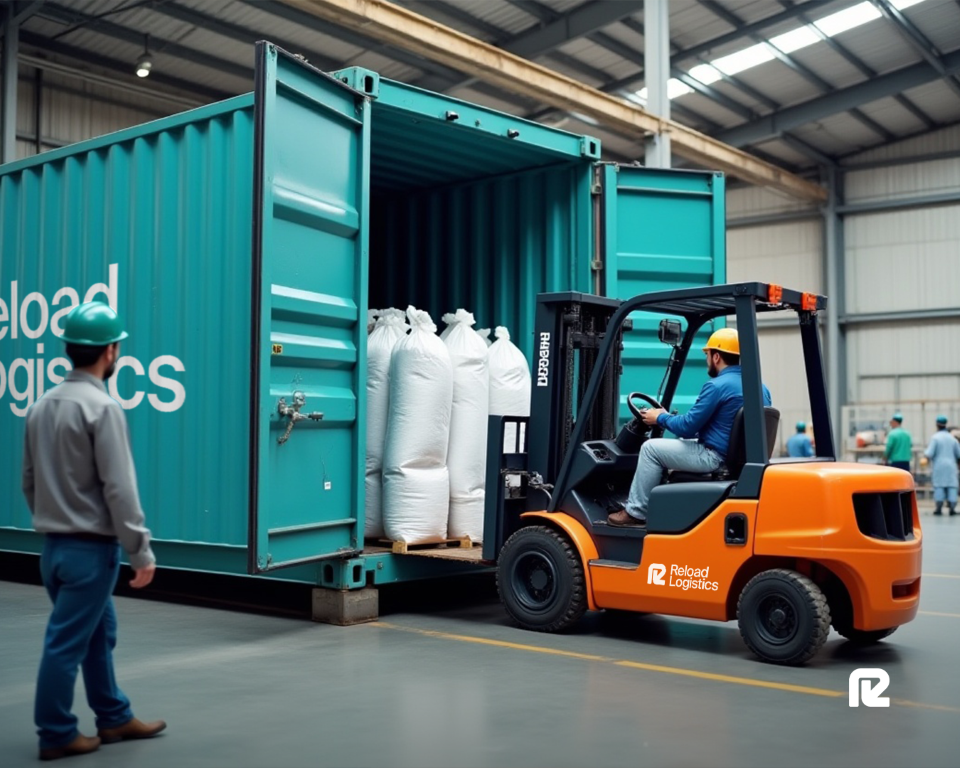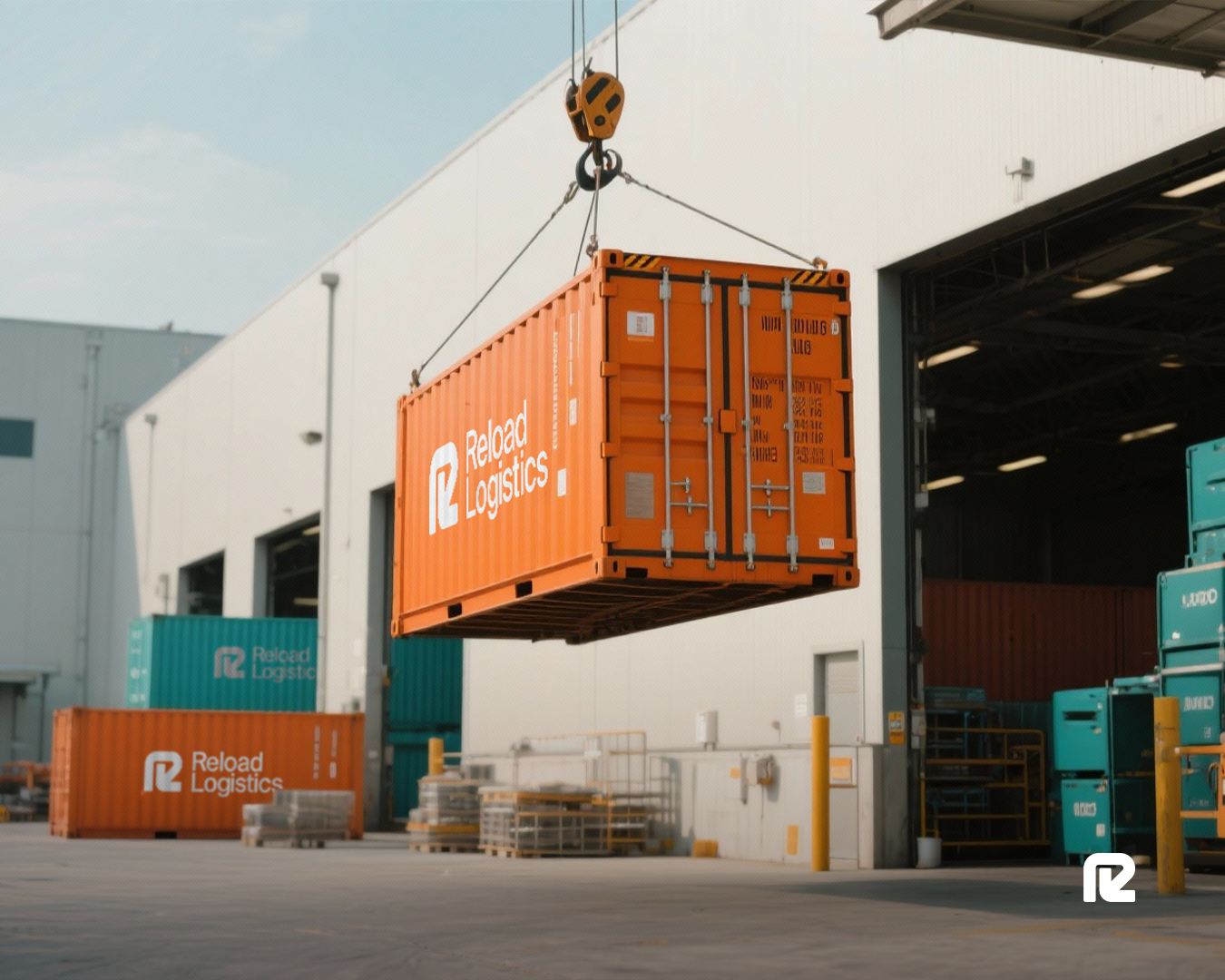Omnichannel Logistics: Transforming Modern Supply Chain Management


Modern businesses across industries face mounting pressure to deliver seamless, integrated experiences to their customers, partners, and stakeholders. Manufacturers and distributors are all discovering that what's expected is unified, efficient logistics across every touchpoint.
Omnichannel logistics represents the strategic integration of all channels, inventory systems, and fulfillment operations to create a unified experience for end users. Unlike traditional logistics models that operate in silos, this approach breaks down barriers between different operational channels, enabling businesses to serve their markets more efficiently across their entire ecosystem and supply chain.
What is Omnichannel Logistics?
Omnichannel logistics is all about creating a seamless, unified experience for end users, from consumers to manufacturing partners, including inventory systems and fulfillment operations.
The goal of omnichannel logistics is to create a single system in which all touchpoints are connected and to eliminate friction that often occurs when channels operate independently. This encourages a cohesive system that better serves customers and, at the same time, reduces operational complications and costs.
Multichannel vs. Omnichannel Logistics
Both multichannel and omnichannel strategies have significantly different executions:
What is multi-channel logistics?
Multi-channel logistics operates through separate, disconnected channels. A manufacturer might serve customers through direct sales, distributors, and online portals, but they function independently with separate systems, pricing structures, and fulfillment processes.
Benefits of Omnichannel Integration
Omnichannel logistics turns this fragmented approach into a cohesive system, giving customers a seamless experience when making purchases. This type of integration creates a single source of truth for inventory, customer data, and order management, enabling businesses to optimize operations across all channels simultaneously.
Components of Omnichannel Logistics
Successfully implementing omnichannel logistics requires several key components that work together to create a more unified system than traditional logistics.
1. Demand Planning
Effective demand planning in omnichannel logistics requires forecasting that considers all channels. When channels are treated separately, it can lead to an overstock in some areas and stockouts in others. Omnichannel logistics uses advanced analytics to predict behavior, enabling more accurate inventory planning.
2. Supply Chain Integration
This involves connecting suppliers, warehouses, and distribution centers into a unified network. Rather than operating all separate supply chains, businesses create a flexible infrastructure that serves all channels efficiently.
3. Inventory Management
Inventory management in omnichannel logistics requires real-time visibility across all locations and channels. Advanced inventory systems provide accurate stock levels, allowing businesses to fulfill orders from the most strategic warehouse location.
What are the 4 pillars of omnichannel logistics?
The four pillars of omnichannel logistics include:
• Unified customer data
• Integrated inventory management
• Seamless order fulfillment
• Consistent customer experience
The idea is that these pillars work together to create an experience where customers move fluidly between channels without friction.
Strategies for Successful Omnichannel Logistics
Successful omnichannel implementation requires careful planning and execution across multiple strategic areas.
1. Integration of Sales Channels: True integration includes processes and policies, having sales channels work together seamlessly, sharing information and resources to optimize the overall customer experience.
2. Real-time Inventory Management: Implementing systems that provide accurate, real-time inventory visibility across all locations enables optimal fulfillment decisions and prevents stockouts.
3. Flexible Fulfillment Options: Offering multiple fulfillment options requires flexible systems that can route orders to the most appropriate fulfillment method based on operational efficiency.
4. Customer Data Analytics: Leveraging customer data across all touchpoints enables personalization, improves forecasting, and identifies opportunities for operational improvement.
5. Seamless Customer Service: Customer service representatives must have access to complete customer information across all channels to provide consistent, informed support regardless of how customers choose to interact with the business.
Benefits of Omnichannel Logistics
Businesses find that when they implement omnichannel logistics, it creates value as well as improves customer and partner relationships and experiences.
Operational Benefits for Businesses:
• Minimized Inventory Costs – Having visibility into a unified inventory allows for more dynamic inventory allocation based on real-time demand, reducing overall investment into inventory and preventing stockouts. For businesses, this means optimizing stock levels across all locations, instead of having broken visibility, and avoiding overstock while ensuring availability where it’s needed most.
• Enhanced Customer Insights – Data provides an overall view of customer behavior, enabling better account management and service offerings, leading to stronger relationships with both customers and partners, and an increase in customer lifetime value.
• Optimized Facilities – Omnichannel logistics leads to integrated networks and maximum efficiency. Traditional warehouses can be turned into omnichannel centers that handle both distribution and direct orders.
Customer and Partner Experience Benefits:
• Delivery Speeds – Faster fulfillment becomes possible when sourcing orders from the closest strategic location, reducing delivery times.
• Improved Availability - Having wide inventory visibility avoids stockouts by enabling fulfillment from more locations. Real-time tracking and strong communication enable trust, while simplifying the returns process reduces friction and encourages onward partner relationships.
Challenges in Implementing Omnichannel Logistics
Despite all its benefits, implementing omnichannel logistics presents some challenges.
• Siloed Supply Chain Processes - Many organizations struggle to break down traditional silos between channels and departments. Overcoming these organizational barriers requires cultural change as much as technological integration.
• Lack of Inventory Visibility - Achieving real-time inventory visibility across all locations requires significant investment into technology and new processes.
• Traditional Fulfillment Limitations - Existing warehouses and fulfillment centers designed for bulk shipments to stores may not be optimized for individual orders. Retrofitting these facilities for omnichannel operations can be complex and expensive.
• Ineffective Reverse Logistics - Managing returns across multiple channels requires careful coordination to ensure inventory is properly processed and returned to available stock quickly. Poor reverse logistics can tie up significant working capital and create customer satisfaction issues.
Selection of Third-Party Logistics (3PL) Partners
Choosing 3PL partners that can support omnichannel operations requires careful evaluation of their technology capabilities, network coverage, and integration abilities. The wrong partners can create bottlenecks that undermine the entire omnichannel strategy.
The right 3PL partners provide seamless system integration, flexible fulfillment capabilities for both bulk and individual orders, and scalable infrastructure. Most importantly, they act as collaborative partners rather than just service providers, working to solve challenges and optimize overall supply chain performance.
Future Trends in Omnichannel Logistics
The evolution of omnichannel logistics continues as new technologies and customer expectations emerge.
Sustainability in Logistics
Environmental concerns are driving innovation in omnichannel logistics, with businesses exploring carbon-neutral delivery options, optimized routing to reduce emissions, and packaging innovations that minimize waste.
Innovations in Delivery Methods
Autonomous vehicles represent the next wave in omnichannel fulfillment. These technologies can further reduce delivery times and costs while increasing convenience.
Evolving Consumer Preferences
As digital natives become a larger portion of the customer base, expectations for seamless, instant, and personalized experiences will continue to rise. Omnichannel logistics systems must evolve to meet these increasing demands while maintaining operational efficiency.
Businesses should look towards seamlessly integrating all touchpoints into a unified, efficient operation. At Reload Logistics, we help businesses across industries transform fragmented operations into cohesive omnichannel systems. Whether you're integrating direct sales with distributor networks or coordinating multiple delivery channels, we provide the expertise and scalable infrastructure needed for omnichannel success.
Frequently Asked Questions (FAQs)
What is the meaning of omnichannel shipping?
Omnichannel shipping integrates multiple delivery methods through unified systems to provide seamless fulfillment options across all channels.
What is omnichannel in the supply chain?
Omnichannel in supply chain integrates all channels—suppliers, manufacturers, distributors, and customers—into a unified system for seamless coordination.
What are the types of omnichannel?
Types include retail omnichannel, B2B omnichannel, manufacturing omnichannel, and service omnichannel, each integrating different channel combinations.
What i the difference between traditional and omni channel logistics?
Traditional logistics operates in silos with separate systems, while omnichannel logistics integrates all channels for unified operations and consistent experiences.
Categories






